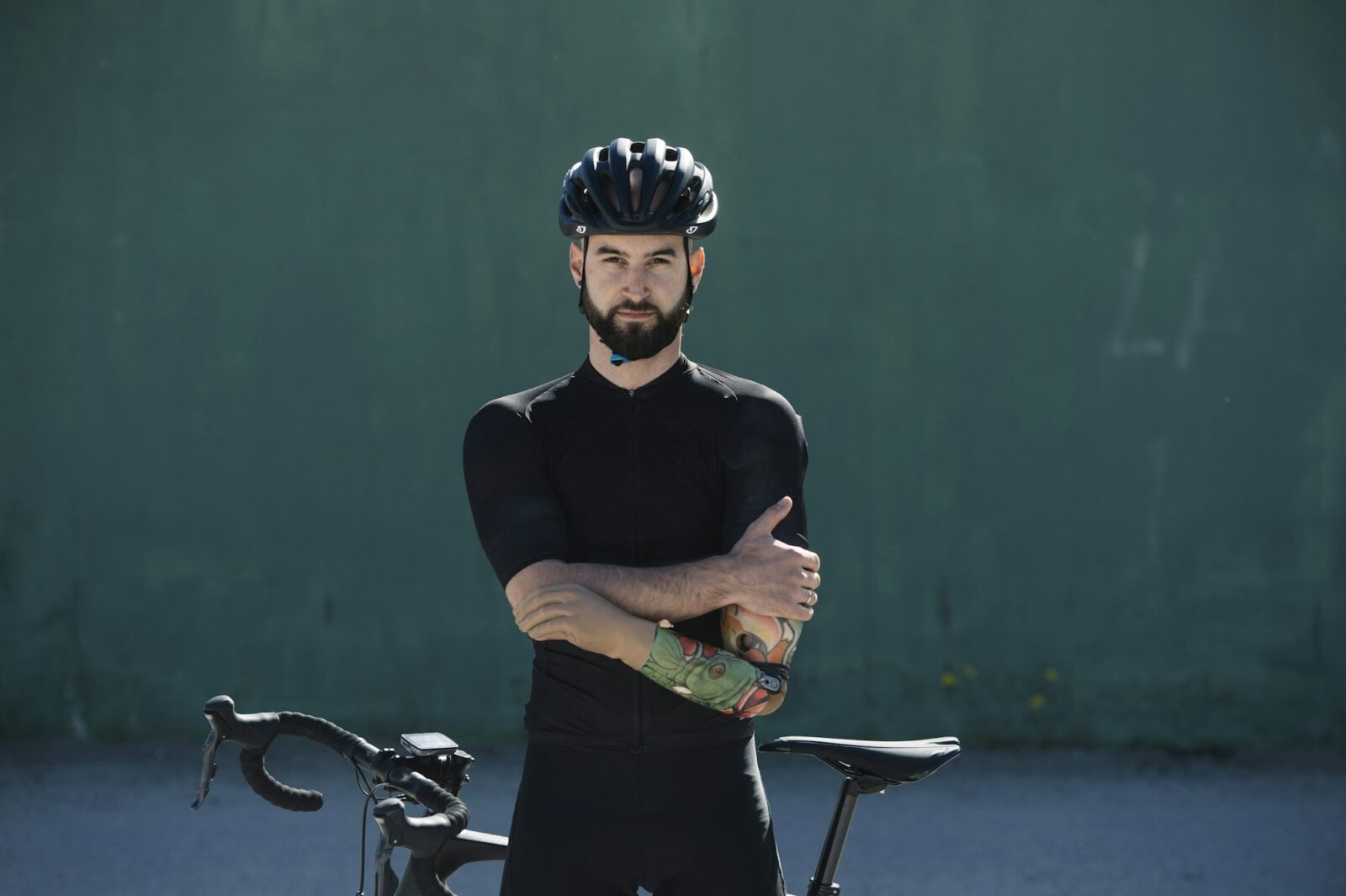Driving on Florida's roads can be challenging, especially when it comes to understanding the right of way for bicycles. As a bicyclist in Florida, you often share the road with cars, pedestrians, and other vehicles, so it's important to know your rights. It's also important for motorists to understand these laws to ensure the safety of all road users.

Florida Bicycle Laws and Right of Way
In Florida, bicycles do have the right of way in several situations, particularly when adhering to specific traffic laws. However, in Florida, bicycles are legally considered vehicles, so cyclists must adhere to specific traffic laws that align closely with those governing motor vehicles.
While riding on sidewalks, cyclists must yield to pedestrians and provide an audible signal before passing. Additionally, in cases where no-passing zones are in place, drivers may safely and briefly move to the left to overtake a bicycle.
Understanding the Right of Way
In Florida, bicyclists have the same rights and responsibilities as motorists. This means that you must stop at stop signs and red lights when riding a bicycle. You must ride with the flow of traffic, not against it.
If you are on a sidewalk or crosswalk, you have the same rights and obligations as pedestrians. Pedestrians and cyclists should respect each other’s space, especially in urban areas where traffic can be heavy.
Specific Laws for Bicyclists
In addition to the laws that apply to operators of any vehicle in Florida, there are several specific laws in place for bicyclists to ensure safety. These laws cover things like:
- Lights and Reflectors: When riding at night, you must have a white light on the front and a red light or reflector on the back.
- Brakes: Your bicycle must be equipped with a brake that will stop the bicycle within 25 feet at a speed of 10 miles per hour on dry, level ground.
- Sidewalk Riding: When riding on the sidewalk, you must yield the right of way to pedestrians and give an audible signal before overtaking them.
- Lane Usage: You may not ride more than two abreast unless you are on a bike path or lane.
Difference Between Bicycles and Vehicles
While Florida law classifies bicycles as vehicles, there are important differences between the laws that apply to cyclists and motor vehicles.
- Speed and mass: Bicycles are generally slower and lighter than motor vehicles, which affects their interaction with other traffic and the road environment.
- Sharing the road: Cyclists can use bike lanes if they are available. In the absence of bike lanes, cyclists should ride as close as possible to the right-hand curb or edge of the roadway as practicable.
- Overtaking distance: Motorists must maintain at least a three-foot distance when overtaking a bicycle.
Bicycle Lanes and Path Usage
Bicycle lanes in Florida provide designated spaces for cyclists, ensuring safer travel alongside vehicular traffic. On shared paths, both cyclists and pedestrians must adhere to specific guidelines to minimize conflicts and enhance safety.
Riding in Bike Lanes
Bike lanes are marked sections of the roadway designated exclusively for bicyclists. In Florida, bicycles are legally treated as vehicles, so bicyclists have the right to use these lanes. Regulations for bicycle lanes include:
- Cyclists must ride in the direction of traffic.
- Use lights at night for visibility.
- Follow all traffic signs and signals.
If a bike lane is present, you are generally required to use it unless it's obstructed or unsafe. Cyclists can "take the lane" if the bike lane is hazardous or the roadway is too narrow.
Sharing Paths with Pedestrians
Shared paths accommodate both cyclists and pedestrians. On these routes, courtesy and caution are vital. Key practices include:
- Yield to pedestrians at all times.
- Announce your approach or ring a bell when overtaking pedestrians.
- Maintain a reasonable speed and avoid weaving among walkers.
Cyclists should ride single file in crowded areas and be prepared to slow down or stop suddenly. Adhering to these practices ensures a harmonious and safe shared path experience for everyone involved.
Rules for Sidewalks and Crosswalks
In Florida, bicyclists must follow specific rules when using sidewalks and crosswalks. These rules ensure safe interactions with pedestrians and proper conduct at intersections.
Interactions between cyclists and pedestrians
When riding on sidewalks, you must give way to pedestrians. This means slowing down and, if necessary, stopping to allow pedestrians to pass safely.
Cyclists must also give an audible signal before overtaking and passing a pedestrian. This can be a bell, a horn, or a verbal indication like saying "on your left"
These rules are designed to minimize conflicts and ensure that both pedestrians and cyclists can use the sidewalks safely.
Crossing at intersections
At intersections, cyclists must follow certain guidelines to ensure safety. When approaching a crosswalk, you should dismount and walk your bike across if the intersection is busy or the signals require it. You should also obey all traffic signals and signs like any other vehicle.
In some areas, local ordinances may have additional rules. Always check local laws and abide by them to avoid penalties and ensure everyone's safety. Stay on the right side of the crosswalk and proceed when it is safe to do so, making sure you are not blocking the path of pedestrians or other vehicles.
Traffic Signs and Road Safety
Bicyclists are legally considered drivers in Florida. This means that they must obey all traffic control devices. Stop signs and traffic signals apply equally to bicycles and motor vehicles. Failure to obey these signals can lead to accidents and can be punishable by law.
When you approach a stop sign, you must come to a complete stop and yield to any traffic already in the intersection. Red lights require a full stop until the light turns green. Riding against the flow of traffic or ignoring these controls dramatically increases the risk of collisions.
Signaling and Right of Way
Proper signaling and right-of-way adherence are crucial for safe cycling on public roads. In Florida, you must use hand signals to indicate turns and stops. For a left turn, extend your left arm straight out. For a right turn, either extend your right arm straight out or raise your left arm to a 90-degree angle.
When on the road, always travel in the same direction as the flow of traffic. This ensures predictability and minimizes the chances of accidents. Lane positioning is also vital—if a lane is wide enough to share, ride three feet to the right. If it’s not, “take the lane” by riding in the middle.
Signs like yield signs require you to let other road users go first when merging or crossing roadways. By following these guidelines, you contribute to a safer and more orderly traffic environment for everyone.
Overtaking and Passing Rules
Motor vehicle drivers must maintain a safe distance when overtaking a bicycle in Florida. The state requires a minimum of three feet of clearance between the vehicle and the bicyclist, which helps prevent accidents and ensures cyclists' safety.
The driver must also overtake on the left unless there are specific conditions that permit passing on the right. Moreover, if a cyclist is in a separated bicycle lane, the rules for overtaking differ. Drivers must also use an audible signal, such as a horn, to alert the bicyclist when overtaking. This helps prevent sudden movements by cyclists that could lead to collisions.
Passing Guidelines for Motorists
When passing a bicyclist, motorists need to adhere to certain guidelines. The law mandates that drivers wait until it is safe and clear to pass. Passing a cyclist requires checking for oncoming traffic and ensuring that there is no imminent danger.
Drivers must move into the adjacent left lane, similar to passing another motor vehicle. If traffic conditions do not allow for the three-foot clearance, motorists should slow down and follow behind the bicyclist until it is safe to pass. In addition, passing on curves or inclines where visibility is limited should be avoided to ensure the safety of all road users.
Bicycling at Night and Visibility
Bicycling at night requires specific measures to ensure your safety and visibility. This involves adhering to legal requirements for lights and reflectors and adopting additional strategies to remain seen by other road users.
Requirements for Lights and Reflectors
In Florida, bicyclists are legally mandated to use certain lights and reflectors when riding at night. Florida Statute 316.2065 (7) requires a front lamp emitting a white light visible from the front of the bicycle from at least 500 feet. Additionally, a red reflector must be affixed to the rear and be visible from 600 feet when in front of lower beam headlights. These laws are designed to make you easily detectable to motorists, thereby reducing the risk of accidents.
Enhancing Visibility for Safety
Beyond complying with legal requirements, enhancing your visibility can significantly improve safety. Wearing bright and reflective clothing, such as high-visibility jackets and vests, helps others see you from a distance.
Consider attaching extra lights to your bicycle or helmet for added visibility. Flashing lights can be particularly effective as they draw more attention than steady lights. Using reflective tape on your bike frame and gear can also increase your presence on poorly lit roads, making it easier for drivers to spot you.
Local Ordinances and Variations
Local ordinances across Florida can significantly influence how bicycle laws are applied regionally. Compliance with these laws is crucial for ensuring safety and avoiding penalties.
Region-Specific Bicycle Laws
Local ordinances can vary widely among different municipalities in Florida. For instance, while state law allows bicycles on sidewalks, specific cities may enforce their own restrictions. In some areas, you may find bike paths designated to reduce conflicts between cyclists and pedestrians.
Different regions might also have additional signage or marked bike lanes requiring adherence to unique traffic control measures. It's important to stay informed about the regulations, particularly where you are riding, to ensure that you comply with any local requirements.
Compliance with Local Requirements
To comply with local requirements, it is essential to research and understand the specific bicycle laws in your area. This may include abiding by ordinances requiring the use of bike lights at night or prohibiting riding on certain sidewalks.
Local governments may also enforce specific "share the road" initiatives, demanding extra caution in mixed-traffic zones. Regular checks with local traffic agencies or city websites can provide the latest updates on these regulations. Adhering to these laws not only enhances your safety but also ensures that you respect pedestrians and other road users.
Determining Fault in Bicycle Accidents
After an accident, fault can be attributed to the motorist, the cyclist, or even third parties like pedestrians or government entities. The Florida Department of Highway Safety and Motor Vehicles often investigates to understand the circumstances.
Key factors include whether traffic laws were obeyed. For example, did the motorist fail to yield? Was the cyclist wearing a helmet or using proper lighting at night? Police and accident reports, as well as witness statements, are vital.
Legal Rights and Remedies
In Florida, cyclists have the right to seek compensation for injuries and damages. Compensation can be sought for medical expenses, lost wages, and even emotional distress. You must document all injuries and expenses carefully to support your claim.
An injury attorney who has experience with bicycle accident cases can be invaluable after an accident. They can guide you through the legal process, deal with insurance companies, and represent you in court if needed.
Speak To A Lawyer About Your Bicycle Accident Now
If you were injured while riding a bicycle in Florida, you should contact an experienced bicycle accident lawyer as soon as possible. Even if you were partially at fault for the accident, you may still be entitled to compensation for your injuries and emotional distress.
Call Weinstein Legal Team now at 888-626-1108 to speak to an experienced injury lawyer right away, or click here to schedule a case review with our team.


